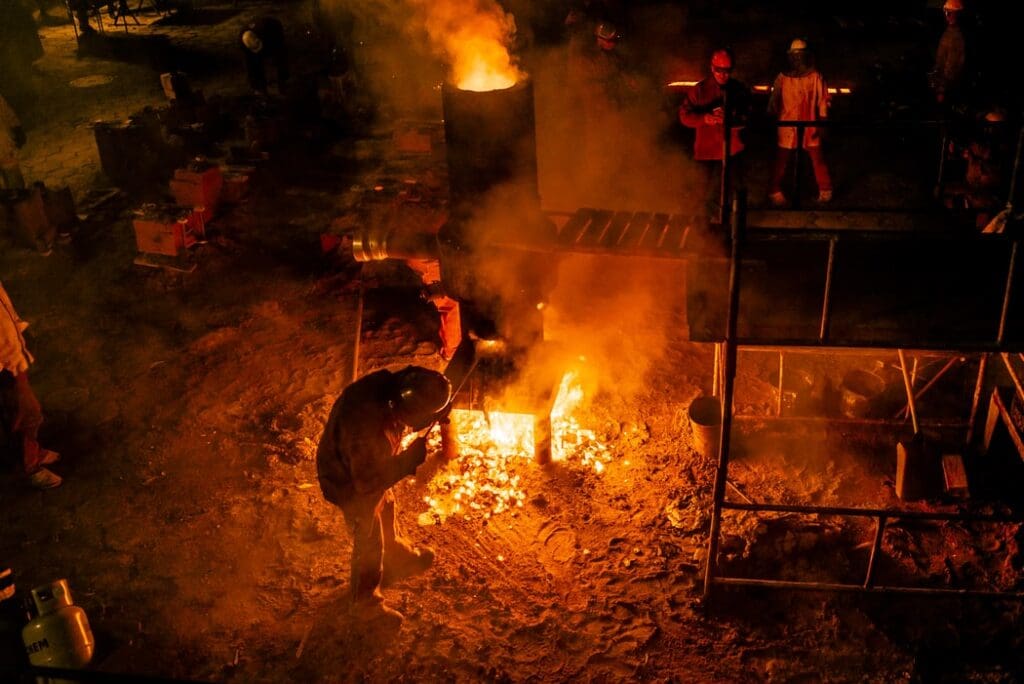Why is Ceramic (Fiber) Heat Resistant?

Heat resistant materials found in everyday life, such as a cast iron pot, an engine block, and a barbecue grill have practical value because they are able to withstand high temperatures after continuous use. All three happen to be made of metal, but there are non-metallic items in everyday life that are heat resistant as well. The cork trivet sitting on a kitchen counter, the porcelain tea pot that never gets used, and the clay chiminea on a back patio are also heat resistant. Ceramics, specifically ceramic fiber, is a heat resistant material widely used in industry today. What are the properties that make ceramic fiber heat resistant?
Heat resistance is dependent on these three things:
- Heat (thermal) conductance
- Heat (thermal) expansion
- Heat (thermal) capacitance
Ceramic fiber and other heat resistant non-metallic materials have tendencies within each of these three properties. Let’s review the basics (i.e. without complicated equations) of what each of these properties are and how they impact non-metallic heat resistant material.

Heat (thermal) conductance
Heat or thermal conductance is the rate of heat transfer within a material (how fast heat moves through a given material). Let’s look at an everyday example, office furniture. The office in the picture above contains a wooden desk and a fabric chair (with plastic and metal parts). All objects in the office are at the same temperature but the wooden desk and the metal part of the chair feel different when touched. One feels cooler than the other. The metal part of the chair feels cooler than the wooden desk because heat leaves the metal faster than the wood. The heat conductance of metal is higher than that of wood, therefore the wood feels warmer because it holds on to the heat longer. Heat resistant materials tend to have lower values of thermal conductance, and they don’t dissipate heat as quickly as materials with higher thermal conductance.

Heat (thermal) expansion
Heat or thermal expansion is how much a material changes form (shape, area, volume) in response to a change in temperature. Material with relatively high thermal expansion (i.e. liquids) will change form more drastically than materials with low thermal expansion (i.e. diamond). An example of thermal expansion occurs in steel railroad tracks on a very hot day. When the temperature gets hot enough railroad tracks expand. Expansion joints, inserted in intervals along the length of a track, are gaps which accommodate for this expansion due to heat. Heat resistant materials tend to experience smaller changes in its structure when exposed to heat, so materials with high thermal expansion values tend to break down quicker in high temperature environments.

Heat (thermal) capacitance
Heat or thermal capacitance is a physical property that defines how much heat is needed to raise the temperature of a particular material. This property can be difficult to understand (and explain). Let’s use food as an example, hot pizza just taken out of the oven. Many of us have made the mistake of taking a bite out of a hot slice of pizza right out of the oven. Assuming the pizza was cooked correctly, the crust is warm but the cheese and sauce will burn the insides of our mouths! Why does the cheese and sauce feel hotter than the crust even though they are all at the same temperature of 475 degrees F in the oven? The heat capacitance of cheese and sauce is lower than the crust, meaning that it takes less heat from the oven to raise the temperature of cheese and sauce than it does the crust. Since all three have absorbed heat from the oven at the same temperature, the heat given off by the cheese and sauce will be higher than that of the crust. Heat resistant materials tend to have higher heat capacitance, so it takes more energy (heat from the oven in this example) to raise its temperature than that of material which is not as heat resistant.
There is an alternate way of thinking about heat capacitance. Instead think “energy capacitance”. Energy and heat are related but different. Energy is the amount of work that can be done in a system. Heat is the energy that is transferred from the system. Now focus on the word “capacitance” or “capacity”. Capacity means the maximum amount that something can hold or contain. Then energy capacity is “how much energy something can contain”, in this case how much energy a material can contain within itself. If the material is containing the energy it is not expelling it (as heat), which is what you would feel if you touch it or taste it.

Answers (and disclosures) …
Three concepts are mentioned above as controlling factors of heat resistance in materials, but this article is written in a very simplistic and general sense. There exist other factors that impact heat resistance not mentioned in this article. Heat resistance is a relative concept, dependent on your application. If you are using a furnace to forge molten metals you are dealing with heat resistance requirements much different than an everyday kitchen application. Thermal conductance, thermal resistance, and thermal capacitance describe one small part of a branch of physics known as thermodynamics. Also note that heat resistance may not be the most accurate term to use in this article with regard to ceramic fiber. Thermal insulator may be more appropriate (i.e. “Why is Ceramic Fiber a Thermal Insulator?”). Nonetheless, let’s continue to use these terms loosely to address the three questions:
